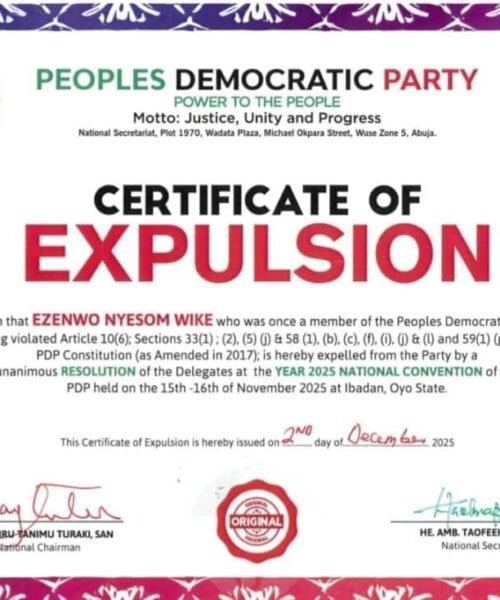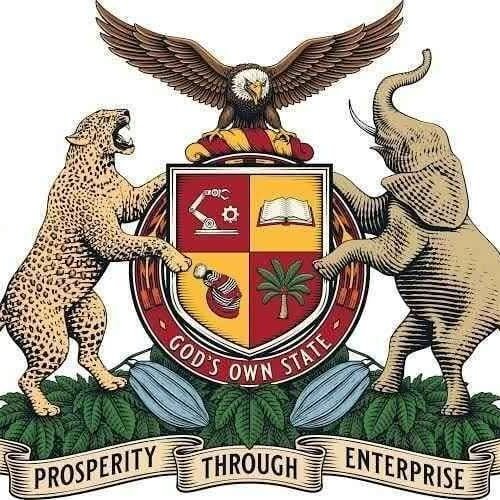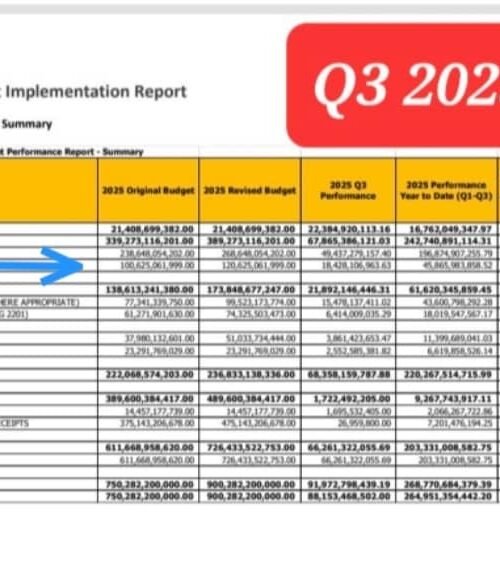Ohafia Local Government Area (LGA) in Abia State has potential for electricity generation
This is an excerpt of the earlier published article of the visual consultation of Hon. Chief Eleanya Ojuu Kalu, the Executive Mayor of Ohafia LGA.
Ohafia Local Government Area (LGA) in Abia State has potential for electricity generation, leveraging:
Renewable Energy Sources:
- Solar Power: Ohafia’s tropical location receives ample sunlight, ideal for solar farms.
- Hydro Power: Ohafia River and its tributaries offer opportunities for small-scale hydroelectric projects.
- Biomass Energy: Agricultural waste from Ohafia’s fertile land can fuel biomass power plants.
Existing Infrastructure:
- Grid Connection: Ohafia is connected to the national grid, facilitating electricity transmission.
- Distribution Networks: Existing distribution lines can be upgraded to support increased power supply.
Economic Benefits:
- Industrial Growth: Reliable electricity attracts industries, creating jobs and stimulating economic growth.
- Agricultural Development: Irrigation systems and cold storage facilities enhance agricultural productivity.
- Commercial Activity: Electricity supports small businesses, markets, and entrepreneurship.
Capacity Building:
- Technical Training: Develop local expertise in renewable energy installation and maintenance.
- Private Sector Partnerships: Collaborate with investors to finance and develop electricity projects.
- Community Engagement: Educate residents on energy efficiency and conservation practices.
Challenges and Solutions:
- Infrastructure Upgrade: Invest in modernizing distribution networks and transmission lines.
- Funding: Explore public-private partnerships, grants, and green financing options.
- Policy Support: Advocate for favorable energy policies and regulations.
Implementation Roadmap:
- Conduct feasibility studies and resource assessments.
- Develop a comprehensive energy plan and policy framework.
- Establish partnerships with investors and stakeholders.
- Implement pilot projects and scale up successful initiatives.
- Monitor progress, evaluate impact, and adjust strategies.
By harnessing its renewable energy potential and addressing infrastructure challenges, Ohafia LGA can generate adequate electricity to drive economic prosperity and improve the quality of life for its residents.
Vast Opportunities
Solar Power
Ohafia’s tropical location makes it an ideal spot for harnessing solar energy. With ample sunlight throughout the year, solar farms can be established to generate electricity. Solar power offers a clean and sustainable source of energy, reducing reliance on fossil fuels and mitigating climate change. The flat terrain and vast open spaces in Ohafia provide suitable sites for large-scale solar farms, which can be connected to the national grid or serve local communities.
Hydro Power
The Ohafia River and its tributaries present opportunities for small-scale hydroelectric projects. Hydro power is a reliable and renewable energy source, providing consistent electricity generation. Run-of-river systems or small dams can be constructed to harness the river’s energy potential, powering local industries, homes, and businesses. Hydroelectric projects also support flood control, irrigation, and aquatic ecosystems.
Biomass Energy
Agricultural waste from Ohafia’s fertile land can be converted into energy through biomass power plants. Biomass energy utilizes organic materials such as crop residues, wood waste, and animal waste to generate electricity. This renewable energy source reduces greenhouse gas emissions, supports sustainable agriculture, and creates jobs. Biomass power plants can also provide heat and steam for industrial processes, enhancing local economic development.
These renewable energy sources offer Ohafia LGA a unique opportunity to transition to a sustainable and environmentally friendly energy mix, driving economic growth and improving the quality of life for its residents.
Existing infrastructure
Grid Connection
Ohafia’s connection to the national grid provides a solid foundation for electricity transmission. This existing infrastructure enables the seamless transmission of generated power to the local distribution network, facilitating efficient supply to homes, businesses, and industries. The national grid connection also allows for the importation of electricity from other regions when needed, ensuring a reliable and stable power supply. Upgrades to the grid connection can further enhance transmission capacity, supporting increased economic activity.
Distribution Networks
Ohafia’s existing distribution networks, comprising high-voltage transmission lines, substations, and low-voltage distribution lines, form the backbone of its electricity supply system. While requiring upgrades, these networks provide a starting point for expanding electricity access and supporting increased power supply. Modernizing distribution infrastructure will minimize energy losses, reduce power outages, and accommodate growing electricity demand from residential, commercial, and industrial users.
Transmission Substations
In addition to grid connection and distribution networks, Ohafia is equipped with transmission substations that play a critical role in stepping down high-voltage electricity to lower voltages suitable for consumer use. These substations ensure reliable and efficient power transmission, enabling the distribution of electricity to meet local demand. Upgrading substation infrastructure will enhance power transmission capacity, supporting economic growth and development initiatives in Ohafia.
These existing infrastructure components provide a solid foundation for Ohafia’s electricity supply system, facilitating efficient transmission and distribution of power. Strategic upgrades and expansions will unlock the area’s full potential for economic growth and development.

Economic benefits
Industrial Growth
Reliable electricity is a crucial catalyst for industrial growth in Ohafia. With a steady power supply, industries can operate efficiently, increasing productivity and competitiveness. This attractiveness draws investors, sparking the establishment of new businesses and expansion of existing ones. As a result, job opportunities abound, stimulating economic growth and improving living standards. Local industries, such as textiles, food processing, and manufacturing, thrive, contributing to the area’s GDP.
Agricultural Development
Electricity-enabled irrigation systems and cold storage facilities revolutionize agricultural productivity in Ohafia. Farmers can now irrigate crops during dry seasons, increasing yields and extending growing seasons. Cold storage preserves perishable produce, reducing post-harvest losses and enabling farmers to sell their products over longer periods. This enhanced agricultural productivity boosts food security, increases farmer incomes, and stimulates local economic activity.
Commercial Activity
Electricity fuels commercial activity in Ohafia, empowering small businesses, markets, and entrepreneurs. With reliable power, shops and markets remain open longer, increasing sales and revenue. Electric lighting enhances security, making commercial areas more attractive to customers. Local entrepreneurs can establish businesses, such as restaurants, hotels, and IT services, creating jobs and driving economic growth.
Additional Economic Benefits
Reliable electricity also:
- Enhances healthcare services through functional medical equipment and cold storage for vaccines.
- Supports education through powered schools, libraries, and digital resources.
- Increases property values, attracting residents and businesses.
- Fosters innovation, enabling startups and tech-based enterprises.
- Stimulates tourism, showcasing Ohafia’s cultural and natural attractions.
By unlocking these economic benefits, reliable electricity transforms Ohafia into a thriving economic hub, improving the quality of life for its residents.
Capacity building required
Technical Training
Developing local expertise in renewable energy installation and maintenance is crucial for Ohafia’s sustainable energy future. Technical training programs equip residents with the skills to design, install, and maintain solar, hydro, and biomass energy systems. This initiative creates jobs, enhances local capacity, reduces reliance on external experts, and fosters knowledge transfer and innovation.
Private Sector Partnerships
Collaborating with investors and private sector entities finances and develops electricity projects in Ohafia. Partnerships attract funding, leverage expertise, enhance technology transfer, and share risks and responsibilities. By working together, Ohafia can tap into the resources and expertise needed to develop its renewable energy sector.
Community Engagement
Educating residents on energy efficiency and conservation practices empowers them to optimize energy usage. Community engagement initiatives promote behavioral change, reduce energy waste, increase adoption of energy-efficient technologies, and foster community ownership and participation in energy projects. This approach ensures that energy solutions are tailored to local needs.
Institutional Capacity Building
Strengthening local institutions ensures effective governance, policy implementation, and sustainable energy development. Institutional capacity building enhances policy formulation and implementation, develops regulatory frameworks, builds administrative capacity, and supports monitoring and evaluation.
Workforce Development
Developing a skilled workforce supports Ohafia’s renewable energy sector growth. Workforce development initiatives provide vocational training, offer apprenticeships, develop entrepreneurial skills, and enhance employability. By investing in its workforce, Ohafia can build a sustainable, locally-driven energy sector.
Challenges and solutions
Infrastructure Upgrade
Ohafia’s outdated distribution networks and transmission lines hinder efficient electricity supply. Modernizing infrastructure is crucial. Upgrades will reduce energy losses, enhance transmission capacity, and support increased power generation. Investments in smart grids, substations, and distribution lines will ensure reliable electricity supply, attracting industries and businesses.
Funding
Securing funding is vital for Ohafia’s energy development. Exploring public-private partnerships, grants, and green financing options can bridge the financial gap. Collaborations with international organizations, development banks, and impact investors can provide access to affordable, long-term funding. Green bonds and crowdfunding platforms offer additional financing avenues.
Policy Support
Favorable energy policies and regulations are essential for Ohafia’s energy growth. Advocacy efforts should focus on streamlined licensing processes, tax incentives, and renewable energy targets. Supportive policies will attract investors, encourage innovation, and ensure a stable regulatory environment. Policy reforms can also promote competition, driving efficiency and affordability.
Technological Barriers
Overcoming technological barriers requires embracing innovative solutions. Adopting advanced technologies like energy storage systems, smart meters, and renewable energy systems will enhance efficiency and reliability.
Community Buy-in
Gaining community support is critical. Engaging residents through education and awareness campaigns will foster acceptance and participation. Community-based initiatives, such as cooperative ownership models, can ensure local benefits and ownership.
Regulatory Framework
A clear regulatory framework ensures compliance and stability. Establishing standards for grid connection, tariffs, and safety protocols will facilitate private sector participation. Regular review and updates will keep regulations aligned with evolving energy trends.
Environmental Considerations
Environmental impact assessments and mitigation strategies ensure sustainable energy development. Incorporating environmental concerns into project planning safeguards ecosystems and communities, maintaining Ohafia’s natural heritage.
The implementation roadmap
Conduct Feasibility Studies and Resource Assessments
The first step in Ohafia’s energy transformation involves conducting thorough feasibility studies and resource assessments. This phase identifies viable renewable energy sources, evaluates existing infrastructure, and determines energy demand. Experts will assess solar, hydro, and biomass potential, as well as existing grid capacity. The findings will inform the development of a comprehensive energy plan.
Develop Comprehensive Energy Plan and Policy Framework
A comprehensive energy plan and policy framework will guide Ohafia’s energy development. This phase involves defining energy targets, outlining regulatory guidelines, and establishing institutional structures. The plan will prioritize renewable energy sources, energy efficiency, and grid modernization. A clear policy framework will ensure coherence and stability.
Establish Partnerships with Investors and Stakeholders
Collaboration with investors, stakeholders, and local communities is vital. Ohafia will establish partnerships with international organizations, development banks, and private sector entities to secure funding and expertise. Stakeholder engagement will ensure community buy-in, addressing concerns and fostering cooperation.
Implement Pilot Projects and Scale Up Successful Initiatives
Pilot projects will demonstrate the viability of renewable energy solutions. Ohafia will launch small-scale initiatives, such as solar-powered mini-grids or biomass energy systems. Successful pilots will be scaled up, replicating effective models across the region.
Monitor Progress, Evaluate Impact, and Adjust Strategies
Continuous monitoring and evaluation ensure the effectiveness of Ohafia’s energy strategy. Key performance indicators (KPIs) will track progress, measuring energy access, renewable energy penetration, and economic impact. Regular assessments will identify areas for improvement, informing adjustments to strategies and optimizing outcomes.
Institutional Capacity Building
Concurrently, Ohafia will strengthen institutional capacity, developing local expertise and administrative capabilities. Training programs, workshops, and knowledge transfer initiatives will enhance the capacity of local institutions to manage and regulate the energy sector.
Community Engagement and Awareness
Community engagement and awareness campaigns will run throughout the implementation process. Educational initiatives will promote energy efficiency, safety, and the benefits of renewable energy, fostering a culture of sustainability.
Review and Revision
The implementation roadmap will undergo regular review and revision. Emerging challenges, technological advancements, and shifting energy landscapes will inform adjustments to strategies, ensuring Ohafia remains on track to achieve its energy goals.
Dr Chukwuemeka Ifegwu Eke writes from the University of Abuja Nigeria







